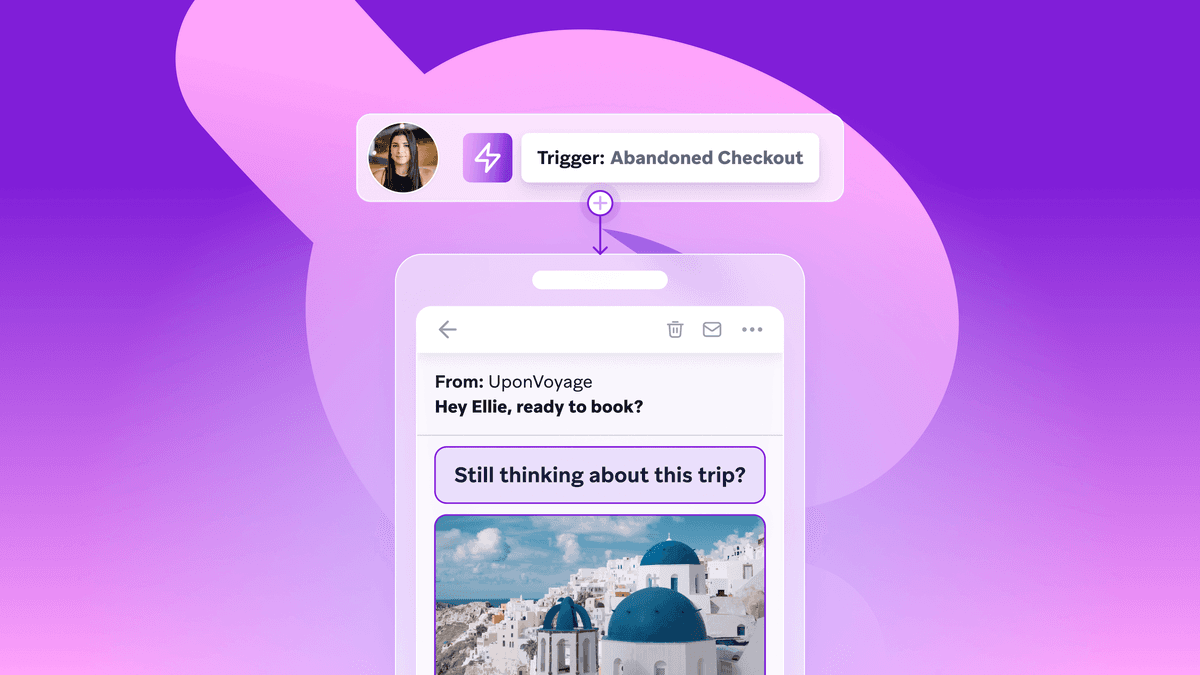What a Best-In-Class Cross-Channel Retail Campaign Really Looks Like
Published on April 29, 2020/Last edited on April 29, 2020/4 min read

Todd Grennan
Managing Editor, Content Marketing at BrazeThe rise of mobile marketing and its array of powerful outreach channels has led to a lot of talk about cross-channel messaging and how it can be an asset to brands. The effectiveness of these kinds of campaigns is undeniable—using multiple channels in your campaign can increase engagement by 800%.
But while a cross-channel strategy is a great way to boost retention and reach customers you’d otherwise miss, getting started can be intimidating. It’s natural to wonder how all those different messages can fit together, and what the customer experience is like.
To give you a better understanding of what a full cross-channel messaging campaign looks like and how it functions, we’ve put together a sample campaign. This campaign will use three different messaging channels to promote a sale for an ecommerce app aimed at women called PamperHer. Let’s get started!
What Are the Messaging Channels?

For the purposes of this example, we’re going to focus on the three most commonly used mobile messaging channels:
- Push notifications: These messages are great for short, urgent outreach. Overusing push notifications, however, can really irritate your customers and lead them to opt out of future notifications. It’s best to make use of push notifications sparingly.
- Email: Email is the ideal channel for sending rich content and in-depth messages to your customers..
- In-App Messages (IAM): This outreach type is probably the most versatile and flexible. While IAM can resemble push notifications in their simplicity and directness, rich IAM can support large images and rich content, making them closer to emails in look and feel. These messages are only visible to customers using your app, though, so they’re most effective in communicating with people already engaged with your brand.
The Promotional Campaign
Imagine that PamperHer will be running a four day sale and is looking to create a cross-channel campaign to inform its audience about the sale and encourage them to make a purchase. To reach the target audience as effectively as possible, it’s important to plan out a messaging cadence for the promotional campaign that takes advantage of the strengths of each outreach channel:

Message #1: Rich In-App Message

By opening the campaign with a rich IAM, you can reach all the people who are currently active on your app at the start of the sale, as well as anyone who opens the app before the sale finishes. These customers are the digital equivalent of people browsing in a brick and mortar store—they’re not guaranteed to buy anything, but the simple fact that they’ve chosen to open your app means they currently want to engage with your brand.
Message #2: Email

The next step is to send a personalized email promoting the sale. For our campaign, customers who visited the app and saw the IAM, but haven’t yet purchased anything, will receive an email with personalized recommendations Customers who haven’t seen the rich in-app message will get a simpler message announcing the sale, laying out what’s included and promoting the 10% discount.
Message #3: Simple In-App Message

This simple IAM will only appear to customers who previously viewed the rich IAM and/or the email but haven’t made a purchase. Because they’ve already been informed about the specifics of the sale and the discount being offered, this message can serve as an effective reminder about the promotion (and an opportunity to sweeten the pot by throwing in free shipping).
Message #4: Push Notification

As the sale approaches its end, PamperHer can use its most direct and urgent messaging channel to drive one last wave of customers to the app’s sale page. If the person receiving the push notification has received previous messages about the promotion, then the push they get will increase the discount to 15% and urge them to make a purchase by noting that the sale they’ve been hearing so much about is nearly over. If, on the other hand, the recipient hasn’t received or looked at any other messages in the campaign, the push they get will announce the promotion like it’s a one-day flash sale and offer them the 15% discount and free shipping as long as they act soon.
The Takeaway
Cross-channel messaging is a great way to engage your audience with a big sale, but long-term success in mobile depends on more than just big results from a single promotional campaign. By executing on a cross-channel strategy, retail brands can increase brand loyalty, engagement, and revenue while also building strong relationships with their customers. And isn’t that what marketing is all about?
Related Tags
Be Absolutely Engaging.™
Sign up for regular updates from Braze.
Related Content
View the Blog
The power of mobile app automation: Benefits, use cases, and best practices

Team Braze

Customer onboarding automation: Benefits, strategies, and best practices

Team Braze

Moving beyond demographics to true understanding: Key insights from Grow with Braze Seoul 2025
